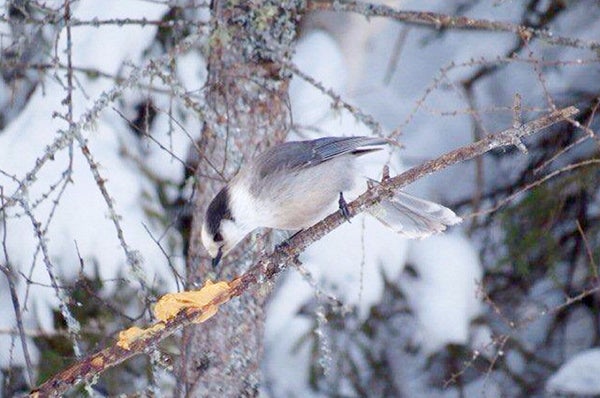Preferred diet of starlings tends to be nuts, berries, suet cakes
Published 9:00 am Sunday, March 13, 2016
My neighbor Crandall stops by.
“How are you doing?” I ask.
“Everything is nearly copacetic. Everyone is so nice. Whenever I visit someone’s home, the hostess offers me cookies or bars. Sometimes even a piece of cake or pie. I guess that putting on weight is the polite thing to do when that happens. I don’t want to discourage people from being nice. Yes, everyone is so nice, but my family is still goofy. A nephew just became a father for the first time. He didn’t name the baby. He says that will protect the child from identity theft. Changing the subject, I smelled a skunk the other day. Nice. That’s a sign of spring. It reminded me of that day when you stopped at the fur farm on your way to church. The fur farm raised foxes and skunks. The owner was carrying two of his favorite skunks. You just had to take a closer look at them even though you were all suit and tied up. When you got to church, you sat down and your stench drove everyone else away. You ended up sitting all by yourself in the pew and in your pew, just like Pepe Le Pew.”
Naturally noticed
I saw pairs of Canada geese standing on the ice of wetlands. The Canadas tapped their webbed feet impatiently while waiting for the ice to melt so that they could get a start at nesting. It’s not March madness. It’s goose sense.
From the mailbag
From Kathy Bolin, “I saw several golden eagles on Saturday and honed my identification skills on that one a bit. At least I wouldn’t confuse it with a wren.”
Kathy had gone on an eagle field trip to the blufflands that was offered by the National Eagle Center in Wabasha.
Jeff Reiter of Glen Ellyn, Illinois, wrote this regarding the Sax-Zim Winter Birding Festival held in Meadowlands, Minnesota in February. “I was one of six attendees from the DuPage Birding Club and we had quite an experience on Saturday night — in a nutshell, we finally found a great gray owl just before dark, and then we celebrated by driving off the road. Two hours later we got towed out of the ditch and drove back to Duluth for dinner.”
Jeff had discovered that Minnesota is a friendly state and our Minnesota road ditches welcome guests at all times, but especially during the winter.
Q&A
John and Betty Nevins of Albert Lea asked where turkeys lay their eggs. Wild turkeys nest on the ground at the bases of trees, under brush piles or thick shrubbery, or in hayfields. The nests are often located near the edges of woods, fields or roadsides, but can be found in almost any habitat. The female scratches a shallow depression in the soil and uses only the dead leaves or other plant materials already present at the site for nest construction.
Jeanie Siewert of Albert Lea wrote, “Is there a way to discourage starlings from visiting my suet feeders?”
The preferred diet of starlings is insects and berries, but they do visit feeders regularly. Their bills aren’t designed for cracking seeds, so they tend to feed on suet cakes and shelled peanuts. You can’t stop starlings, but you can make things difficult for them. You could put a cage around the suet cage. Small holes prevent entry to starlings, but allow access to chickadees and downy woodpeckers. The drawback is that this excludes larger woodpeckers. There are claims that starlings can’t hang upside down like woodpeckers. No one told the starlings. There are suet feeders manufactured to take advantage of the challenge of accessing food from the bottom of a feeder and they might discourage starlings slightly. I wish I had a better answer for you, but starlings are good at what they do.
Nebraska Prairie Chicken Festival on April 8-10
I had the privilege of speaking at the Nebraska Prairie Chicken Festival in the past. It’s an event organized and hosted by Calamus Outfitters that includes morning trips to see greater prairie-chickens and sharp-tailed grouse dancing on leks. Contact information for Calamus Outfitters/Switzer Ranch is 83720 Valleyview Ave., Burwell, NE 68823; 308-346-4697; or hbswitzer@nctc.net.
The 46th annual Audubon’s Nebraska Crane Festival
Another Nebraska favorite I have spoken at a number of times celebrates the migration of 500,000 sandhill cranes through central Nebraska. To be a part of this amazing experience, register for Audubon’s Nebraska Crane Festival March 17 through March 20 in Kearney, Nebraska. Space is limited in the crane viewing river blinds at Rowe Sanctuary. Registration forms are online at nebraskacranefestival.org/registration, call 402-797-2301 or write nebraska@audubon.org.
You can get anywhere from here
I’ve also yapped at Horicon Marsh, which at over 32,000 acres, is the largest freshwater cattail marsh in the United States. If you are a birder or a nature lover, you will enjoy watching the many species of birds and the countless migrating geese that congregate there. The opportune times for viewing the geese are spring and fall. Horicon Marsh is located in Dodge County, Wisconsin, at N7725 Highway 28 between Horicon and Mayville.
Great horned owl nest cam
The Cornell Lab of Ornithology provides a cam at cams.allaboutbirds.org/channel/46/Great_Horned_Owls/.
Thanks for stopping by
“But what is happiness except the simple harmony between a man and the life he leads.” — Albert Camus
“The difficulty lies not so much in developing new ideas as in escaping from old ones.” — John Maynard Keynes
Do good.
Al Batt of Hartland is a member of the Albert Lea Audubon Society. Email him at SnoEowl@aol.com.



